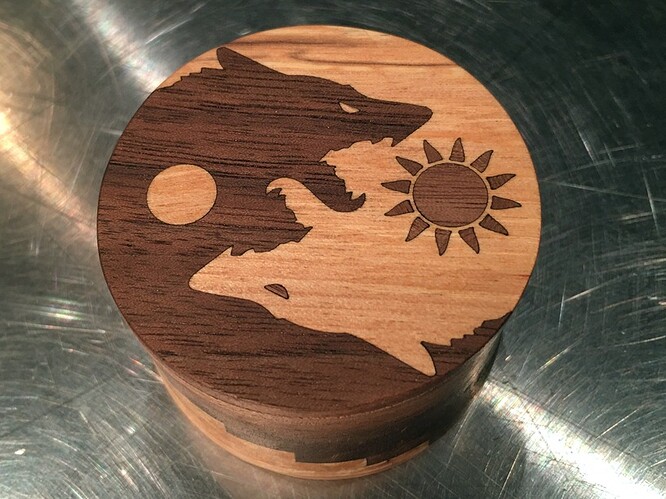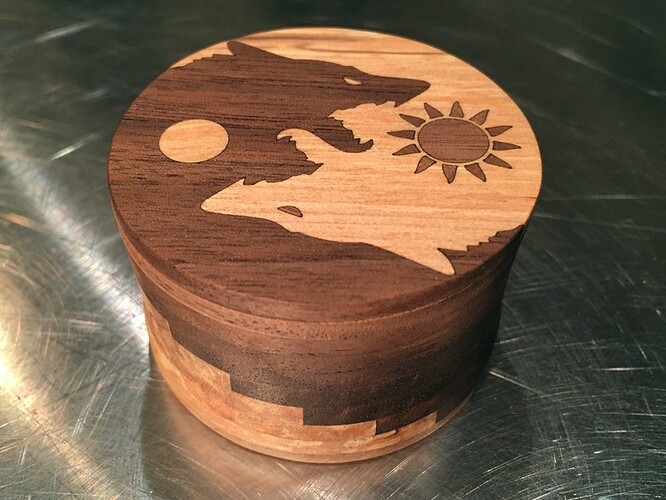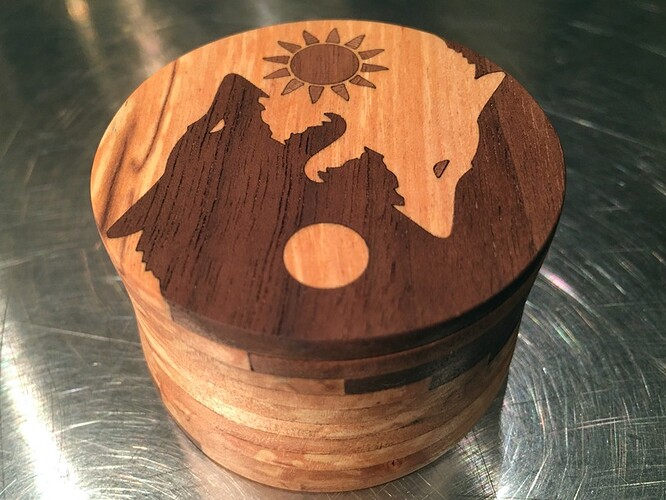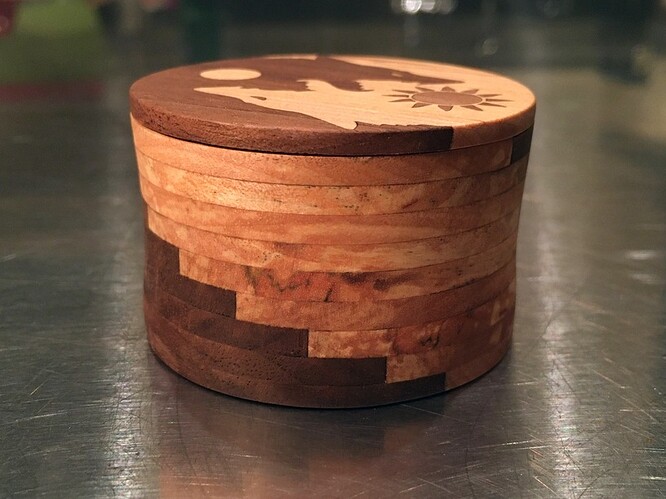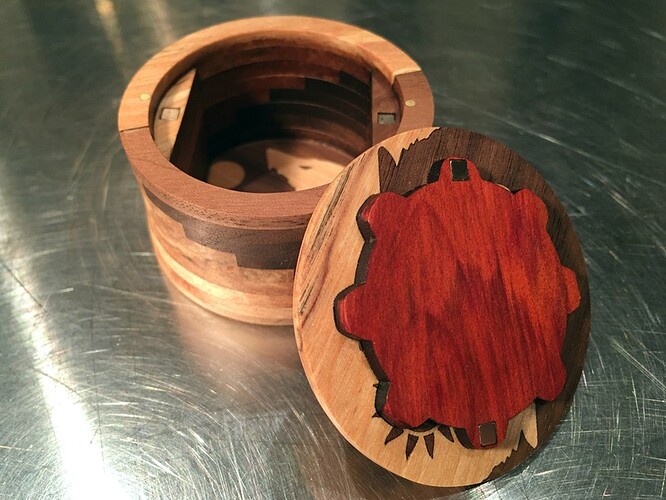Tread lightly, we are OR-2 and OR-4, and we don’t allow just anyone to visit.
I wanted to do something a bit more literal instead of geometric abstractions so I dusted off an old design that I pulled from the web quite a while ago. I’d give attribution but this is one of those images that has been shared so many times that I just can’t be sure of its provenance. I modified it slightly to improve its symmetry and laserability, and here we are.
Notes:
- I don’t have a lot to add technically, this is an execution of a by now pretty well-documented process.
- Overall size, 1.25" tall, 2" diameter at the widest.
- All hardwoods 1/8", the spalted elm is from Kim Oberlin, he’s got excellent hardwoods.
- Sanded to 600 grit
- Finished with satin polyurethane.
The inlay is a good example of what clean corners has enabled. These types of sharp corners used to be forbidden territory if you wanted fine inlay results, but now almost any sharp corner is in play.
(Walnut, Spalted Elm)
As you angle down a bit, you can see that the walnut grain orientation rotates with the box. That means that as you turn it the light catches each layer in sequence, almost animating a shine up and down as you twist it.
(Walnut, Spalted Elm)
Twisting the box 90 degrees the orientation of the wolf yin yang is just as pleasing to me. I really do like this design, I’m glad I finally found a way to do it justice.
(Walnut, Spalted Elm)
Angling down on to the edges of that spalted elm reveals a very interesting color effect. These pictures don’t come close to accurately showing it off, this stuff is outstanding. The overall effect is like a layered burl. both chaotic and geometric – it’s just so improbable it stops you in your tracks.
(Walnut, Spalted Elm)
The interior is a lot like my other boxes, but I decided to use a little bit of redheart to provide a little surprise pop of color.
(Walnut, Spalted Elm, Brass pins, Neodymium magnets)
Angling down into the interior a bit more shows the bottom inlay (the top and bottom are the same inlay, rotated 180 degrees). It’s more effort yes, but the end result was a truly symmetrical top and bottom and I liked that.
(Walnut, Spalted Elm, Brass pins, Neodymium magnets)
The sides aren’t straight, I designed them to have a “waist”. I have been enjoying the more organic edge shapes that I’ve been exploring lately, I wanted this to be visually subtle, but instantly noticeable in your hand. It works really well, the box feels supple and natural in your hands, yet retains the structured look of a straighter side and doesn’t distract from the inlay.
(Walnut, Spalted Elm)
Final notes:
I glossed over a ton of technical details, but they’ve all been covered in my other posts. I pulled on almost all of my techniques to get this one right, and really couldn’t be happier with the end result.
